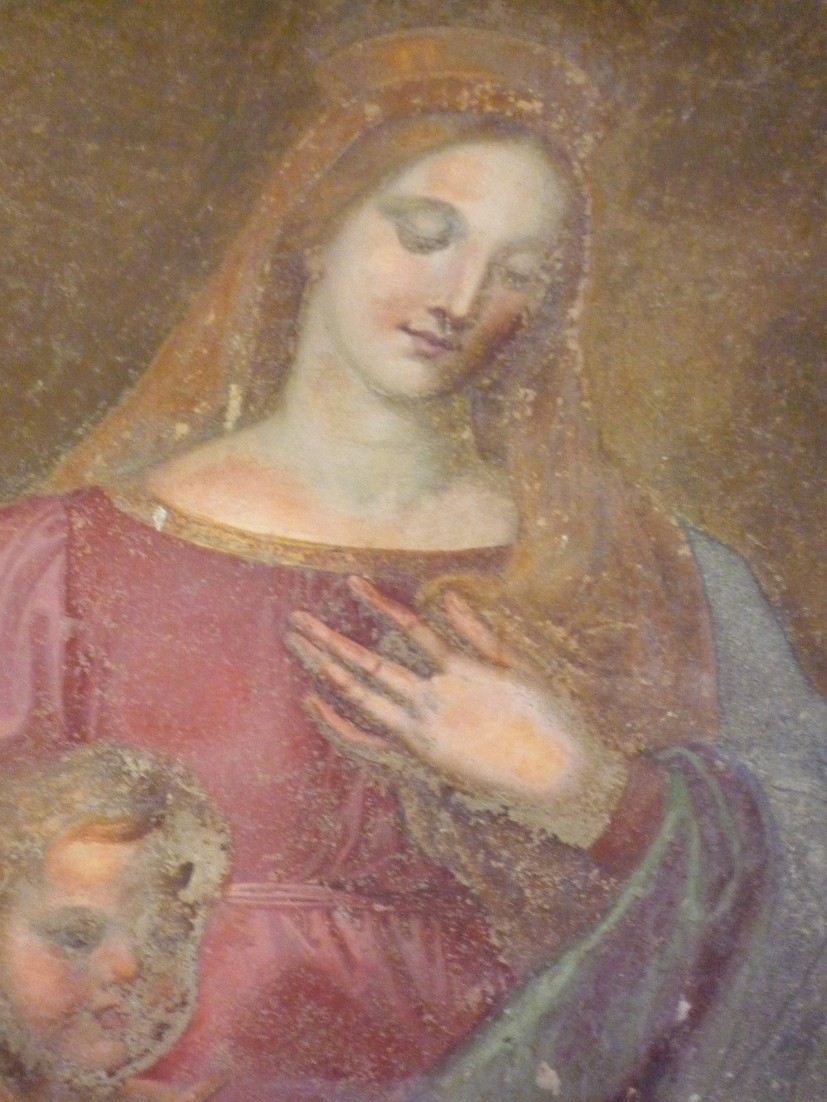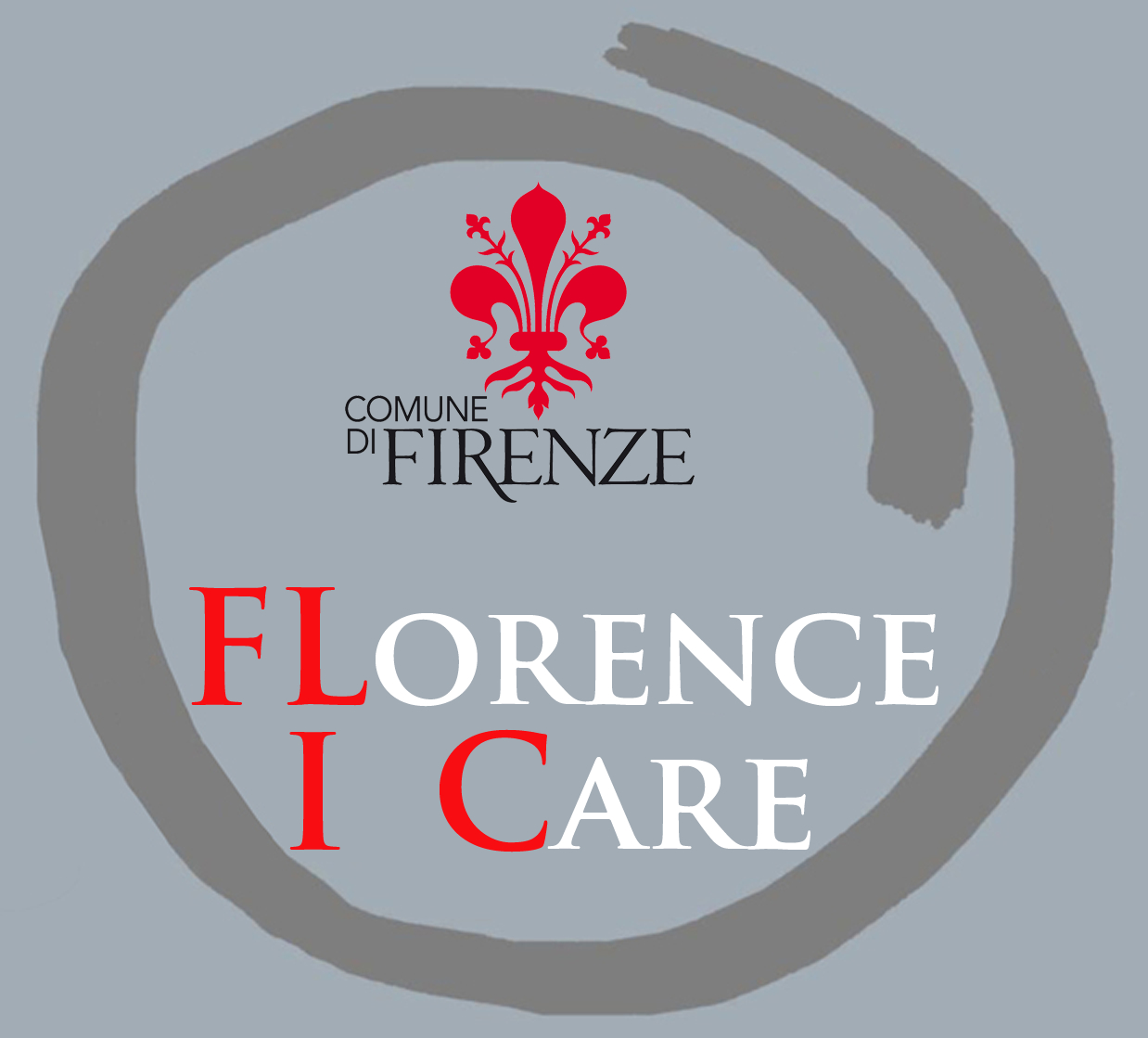Museo di S.Maria Novella - Chiostro dei Morti/Cloister of the Dead
Restauro di Gasparo Martellini raffigurante la Vergine col Bambino/Restoration of Gasparo Martellini depicting the Virgin and Child

“La pittura mostra, non argomenta”.
Alberto Sughi
Del vasto Complesso architettonico di Santa Maria Novella fa parte un vero e proprio sistema di Chiostri, che comprende il Chiostro Grande, il Chiostro Verde, il Chiostro della Sindicheria, il Chiostrino di Padre Dati e il Chiostrino dei Morti.
The vast architectural complex of Santa Maria Novella incorporates a real system of Cloisters, which includes The Great Cloister, The Green Cloister, the Cloister of Sindicheria, The Little Cloister of Father Dati and the Little Cloister of the Dead.
Valore dell’intervento/Value of intervention: € 30.000,00
Durata dei lavori/Time Line: 180 giorni/days
Tipologia dell’intervento: le cause dello stato di degrado in cui versa l’opera sono molteplici, sicuramente le procedure per lo stacco hanno innescato processi negativi, ma certamente alla situazione conservativa attuale, davvero critica, ha fortemente concorso l’interazione dei depositi inquinanti con l’umidità presente nel Chiostro dei Morti. Il restauro dell’opera dovrà iniziare con il preconsolidamento dell’intera superficie, operazione indispensabile a recuperare le particelle di colore distaccate e in fase di perdita, dopodiché potrà essere effettuata la pulitura definitiva e la de solfatazione dell’intonaco, cui seguiranno il consolidamento, la stuccatura delle lacune e la restituzione estetica della scena figurativa, operazione prevedibilmente complessa, data la quantità perdite visibili. Effettuato il restauro sarà necessario revisionare il piccolo ambiente in cui l’affresco del Martellini fu ricollocato, che è interamente aperto sul Chiostro dei Morti ed è troppo stretto per preservare da contatti accidentali le pareti laterali, una delle quali ospita appunto l’opera del Martellini. Contestualmente all’affresco dovranno quindi essere restaurati gli intonaci antichi a neutro di pertinenza, dovranno essere pulite le superfici in arenaria e sarà necessario realizzare una protezione da contatti accidentali dell’opera restaurata, tale da non creare interferenze estetiche con l’insieme.
Type of intervention: the causes of the degradation faced by the building are many, surely the procedures for the detachment have triggered negative processes, but certainly the conservative current situation, really critical, strongly combines to bring about the interaction of pollutants deposits with moisture in the Cloister of the Dead. The restoration work will begin with the pre-consolidation of the entire surface, which is vital to recover the detached color particles which are in a loss phase, after which it may be carried out the cleaning and final desulphation of the plaster, followed by consolidation, the grouting of the gaps and the recovery of the aesthetic figurative scene, a predictably complex task, given the amount of visible leakage. Carried out the restoration, it will be useful to review the small room where the fresco of Martellini was relocated, that is entirely open to the Cloister of the Dead and is too tight to protect against accidental contacts the side walls, one of which houses the work of Martellini. Contextually with the fresco, it will need to restore the ancient plaster to the pertaining neutral, the sandstone surfaces should be cleaned and will be necessary to make a touch-protection of the restored work, that does not interfere with the overall aesthetic.
Attrattività: Alta, per possibilità di allestimento dell’area di deposito del cantiere sullo spazio esterno, prospiciente piazza Stazione. Inoltre il cantiere sarà ben visibile a tutti i visitatori del Museo di Santa Maria Novella.
Attractiveness: High for the possibility of setting up of the storage area of the construction site on outer space, overlooking the Station square. In addition, the site will be visible to all visitors of the Museum of Santa Maria Novella
Notizie storico-artistiche: nel Museo di S. M. Novella sono compresi il Chiostro Verde, il Chiostro dati e il Chiostrino dei Morti, vecchio cimitero dei frati, nel cui porticato verso piazza Stazione si apre il passaggio sulla cui parete è visibile l’affresco oggetto della presente scheda. L’opera raffigura la Vergine con in braccio il Bambino e, inginocchiata ai loro piedi, Santa Teresa realizzata fra gli anni ’20 e gli anni ‘30 dell’Ottocento da Gaspero Martellini sotto il loggiato dell’oratorio di San Benedetto Bianco, che era addossato al lato esterno destro della basilica. L’edificio fu demolito nel 1866 per allargare la confinante via degli Avelli in occasione della costruzione della vecchia stazione ferroviaria, ubicata nelle stesso luogo dell’attuale. Per poterlo conservare l’affresco fu quindi trasportato a massello nella collocazione attuale, una delle pareti precedentemente appartenenti alla Cappella di San Giuseppe, trasformata nel 1890 nelle forme architettoniche che conserva attualmente quella parte complesso architettonico tramite una radicale ristrutturazione del Chiostro dei Morti, eseguita con l’intento di riportarlo alle forme originarie privandolo delle pareti laterali delle Cappelle che nel tempo vi erano state ricavate suddividendolo.
Historical and artistic information: the Museum of SM Novella includes the Green Cloister, the Dati Cloister and the little Cloister of the Dead, the old cemetery of the friars, in whose porch toward Station Square opens the passage on whose wall is visible the fresco concerned in this paragraph. The work shows the Virgin Mary with her Child and, kneeling at their feet, Santa Teresa. It was painted between the 20s and the 30s of the nineteenth century by Gaspero Martellini under the porch of the oratory of San Benedetto Bianco, which was leaned against the right outer side of the basilica. The building was demolished in 1866 to widen the nearby Via degli Avelli during the construction of the old train station, located in the same place of the present one. In order to preserve the fresco it was then massello detached and transported in the current location, i.e. on one of the walls previously belonging to the Chapel of St. Joseph, transformed in 1890 in the architectural forms which currently maintain the architectural part of the complex through a radical restructuring of the Cloister of the Dead, carried out with the intent to bring it back to its original form by depriving it of the side walls of the Chapels that had been obtained by dividing it during the times.
